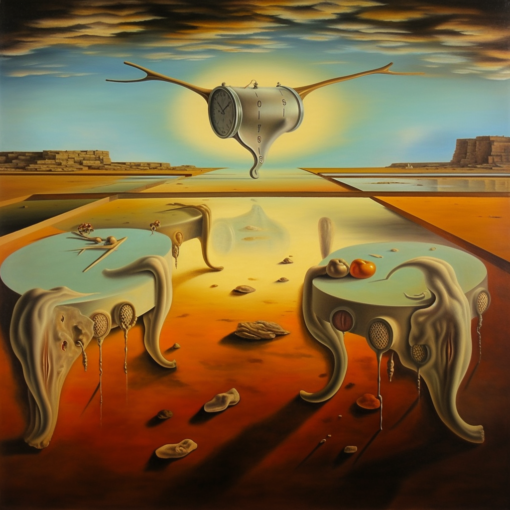Greetings, my discerning friends,
In our constant pursuit of knowledge and understanding, we often find ourselves focusing on the tangible, the concrete, the visible. The lines and colors, the strokes and textures, these are the elements that catch our attention when we stand before a piece of art. But today, let’s shift our perspective and embrace the intangible, the unseen, the void. Today, let’s delve into the world of ‘negative space’.
Negative space, in art, refers to the area around and between the subject of an image. Often overlooked, it is the silent partner to the object, or positive space, in the dance of composition. It may seem counterintuitive, but the space that is ’empty’ is as crucial as the space that is filled.
Why, you may ask? Because the negative space defines and enhances the positive space. It shapes the object, provides context, guides our eyes, and creates balance. It is the canvas upon which the artist paints, the silence between the notes that makes the music. In essence, negative space is the yin to the positive space’s yang.
Consider the iconic logo of the World Wildlife Fund, where the negative space is used to create the image of a panda. The black shapes define the areas of white, which in turn form the panda’s distinctive features. The ’empty’ white space is as essential as the ‘filled’ black shapes in creating the image.
Now, extend this concept beyond graphic design to paintings, sculptures, architecture, and even literature. The pause between words, the silence between dialogues, the empty corridors echoing with anticipation, all use ‘negative space’ to enhance the narrative.
As we meander through life, may we remember the lesson of negative space. The value of pause, the importance of silence, the beauty of emptiness. For it is in the quiet moments, the spaces in between, that we truly appreciate the filled ones.
So, dear readers, the next time you find yourself in front of a work of art, or indeed, in any situation, take a moment to acknowledge the negative space. You might find that the emptiness is filled with meaning.
Until next time,
Percival Q. Higginbottom

Suggested Websites for Further Reading:
- “Understanding Positive and Negative Space”: An insightful article explaining the concept of positive and negative space in art.
- “The Art of Negative Space: 15 Amazing Examples”: An inspiring compilation of artwork that effectively uses negative space.
- “Exploring the Role of Negative Space in the Visual Arts”: An in-depth look at the historical use of negative space in various art forms.



9 thoughts on “The Paradox of Negative Space: The Magic of Emptiness”
I don’t think the title of your article matches the content lol. Just kidding, mainly because I had some doubts after reading the article.
Can you be more specific about the content of your article? After reading it, I still have some doubts. Hope you can help me.
Thanks for sharing. I read many of your blog posts, cool, your blog is very good.
Your article helped me a lot, is there any more related content? Thanks!
Your point of view caught my eye and was very interesting. Thanks. I have a question for you. https://www.binance.info/en-IN/register-person?ref=UM6SMJM3
Thank you for your sharing. I am worried that I lack creative ideas. It is your article that makes me full of hope. Thank you. But, I have a question, can you help me?
Your point of view caught my eye and was very interesting. Thanks. I have a question for you. free binance account
Having trouble logging into V9bet? Check out dangnhapv9bet. Heard it’s a helpful portal for getting back in. Hope it works for me! Here’s the link: dangnhapv9bet
Yo, B52dangnhap is my go-to when I need a quick and reliable login. No messing around, straight to the action! Check it out b52dangnhap.